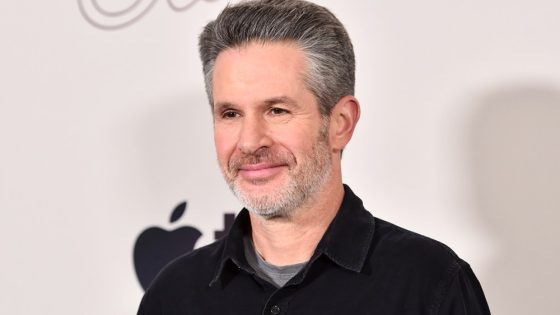Canada is well-positioned to cement its legacy in swimming this summer at the Paris Olympics, with stars such as Summer McIntosh, Maggie Mac Neil and Josh Liendo blazing trails.
But despite its popularity, elite swimming is also one of the sports that remains predominantly white in its participation. The IDEAS lab at University of Toronto authored a report detailing the racial breakdowns of sports across university and college campuses in Ontario. Unsurprisingly, the research shows swimming does not have racial diversity like football, basketball or soccer.
As a child, I swam competitively at the Halifax Trojan Aquatic Club for two years and enjoyed it. There were zero discussions on inclusion and diversity and I felt out of place sometimes, but it was Halifax in the 1980s. To my recollection, there was not a single Black swimmer at the club at that time.
But how are we doing now? Are more pools and swimming spaces welcoming for Black athletes? Could swimming organizations do better in learning about inclusion in the sport and how to connect with communities that may be under-represented?
Swimming Canada has an article on their website from 2021 that features Debbie Armstead, Canada’s first Black swimmer on the national team. Team Canada’s Josh Liendo often amplifies his own experience as a role model for young Black swimmers.
Swim Ontario has a feature from 2023 on its website about Jacky Bedford-Henriques, a Jamaican swimming coach. And in 2017, Chantique Carey-Payne became the first Black university swimming head coach when she was named to lead U of Guelph’s team. It’s important to see these accomplishments. But what about the day-to-day work?
Black History Month (BHM) could be a great opportunity to educate the swimming community about issues of anti-Blackness in sport. Not every racialized athlete has the same experience, and each swimmer will have their own relationship with the sport — in and out of water. But there has to be an entry point.
I spoke with Stefan Knight, who swam on the St. Marcellinus Secondary School swim team in Mississauga 10 years ago. Knight told me that although there were South Asian and East Asian swimmers, he was the only Black swimmer. But his experience, though only high school and not a club, was very positive.
“I’ve been swimming since I was a four-year old,” he said. “They made me feel included and heard … and there was no negativity or discrimination coming from the competition or from the other teams we swam against, either.”
Knight says his love for swimming was bolstered from his experience.
But how does one foster a positive space? Education and inclusion take practice. Sharing information over social media, speaker events, or even starting with the history of swimming in Canada and its terrible treatment toward equity-deserving groups might be a strong start.
A club in Whitby, Ont., has an Instagram post by a Black coach, Tisiane (Coach T) Wembou, who offers helpful tips for how to manage coily hair. It’s a great way to be seen, heard, teach and share information, a benefit for coaches and teammates as well.
I asked sports historian Dr. Ornella Nzindukiyimana about how swimming historically excluded Black communities, and what it will take to create a more inclusive space.
“One of the ways swimming as a sport and an activity became a ‘white thing’ is because white people saturated the space, as participants, coaches, life guards, administrators, etc.,” she told me via text message. “And they did this for generations, enough so that in the 1960s, during the civil rights movement for instance, activists saw going swimming as an act of resistance.”
We all know the ways in which segregation existed in the U.S. at pools and public recreational facilities. But Canada was not that different. Policies that prevented Black people from swimming in public pools in Canada also extended to Chinese and Japanese communities.
Restricting any part of the community from learning to swim was not only dangerous, but set a precedent of extreme exclusion in the sport space. Data tells us that in the U.S., the drowning rates of Black people is five times higher than white people. And even in Ontario, drowning rates of racialized people and immigrants are significantly higher.
There is a growing phenomenon of “Black only” swim times at campus pools across Ontario. The University of Waterloo has a dedicated swim time for Black swimmers. According to the website, the intention is “building a better relationship with water for the Black community.” The University of Guelph has offered Black-identifying students time for restorative yoga, and curling clubs are also beginning to offer special times for Black communities to engage with sport.
This is an approach that Nzindukiyimana feels is impactful.
Soul caps initially banned
“Having all-Black swimming programs to create a brave space for families and groups who still carry with them a notion that the pool or the lake is not for them is crucial,” she explained. “But also building a path for people of colour, Black people, and just people who are not white to occupy the swimming space and are visible is one of the keys.
“I think all-Black programs create a sense of being at the pool/lake/etc. and can start breaking down generations-long ideas about who belongs there.”
Even when there are efforts to participate in the space, they are not always welcome.
Black swimming caps (Soul Cap) were initially banned by FINA at the Tokyo Olympics in 2021 before being allowed. In 2019, Breckynn Willis, a young Black swimmer, was disqualified and stripped of her wins in Alaska because of the way the swimsuit fit her body. These are recent examples of how Black swimmers are discriminated against in the culture of swimming.
“It all speaks to a lack of understanding of the standard ways that normalize whiteness and enforce a sense of the ‘other’ as an interloper,” Nzindukiyimana said.
There are efforts to educate and offer lessons and opportunities for swimming for Black community. The University of Toronto’s Faculty of Kinesiology and Physical Education has a webpage dedicated to Black Canadian Pool Histories that offers information. And the University of Waterloo organization The Alliance offers a free learn-to-swim program for women and girls offered at the pool. The program is taught by The Alliance co-founder Beckford Henriques and members of the swim team serve as instructors.
Coaches and staff of pools should understand the history of Black communities and swimming in order to support different swimmers and families. Education campaigns and anti-racism learning modules coming from swimming organizations can encourage wider participation.
Swimming can save lives, and everyone should have the opportunity to learn in a brave space. We need everyone to dive in for that.
Source Agencies



